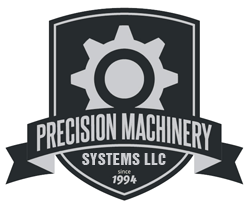7 Essential Tips for Successful Machinery Recycling in Your Factory
In an era where sustainability is becoming paramount for industries, Machinery Recycling has emerged as a critical practice for factories aiming to reduce waste and enhance operational efficiency.

According to a report by the Global Recycling Foundation, the recycling of industrial machinery can lead to a significant reduction in carbon emissions, with potential savings of up to 1.5 billion tons of CO2 annually if embraced widely. Moreover, a study by the World Economic Forum highlights that materials recovery from manufacturing processes can result in cost savings of up to 30% for organizations that prioritize these initiatives.
As factories navigate the complexities of modern production and environmental responsibilities, implementing effective machinery recycling strategies is not just an option—it has become essential for long-term sustainability and profitability.
This blog will explore 7 essential tips to successfully integrate machinery recycling in your factory operations, ensuring both economic and ecological benefits.
Understanding the Importance of Machinery Recycling in Manufacturing
In the manufacturing sector, machinery recycling is not just an ethical practice; it is a crucial strategy for sustainability and efficiency. Research from the Ellen MacArthur Foundation reveals that transitioning to a circular economy could generate $1 trillion in economic benefits by 2025, largely by promoting better resource management and reducing waste. Machinery recycling plays a pivotal role in this transition, as it allows companies to reclaim valuable materials, reduce production costs, and minimize the environmental footprint associated with manufacturing operations.

Furthermore, a study by the National Recycling Coalition indicates that recycling industrial machinery can prevent approximately 1.17 billion tons of carbon emissions annually. By dismantling old equipment and extracting metals, plastics, and other materials, factories can significantly cut down on landfill contributions while revitalizing their supply chains. Additionally, a Deloitte report highlights that organizations practicing effective recycling can improve their brand reputation and customer loyalty, as environmental awareness becomes increasingly influential in consumer decision-making. Embracing machinery recycling not only underscores a commitment to sustainability but also positions manufacturing enterprises to thrive in an evolving economic landscape.
Key Steps for Effective Machinery Assessment and Inventory Management
Effective machinery assessment and inventory management are crucial components for successful recycling in any factory. To start, performing a thorough assessment requires understanding the specific machinery and its condition. This involves evaluating the machine's age, functionality, and potential for reuse or refurbishment. Utilizing frameworks, such as the recent advancements in quality assessment models for robotics and automation, can enhance accuracy in identifying which equipment can still serve a purpose in production or can be recycled.
Next, maintaining a detailed inventory management system is essential. Implementing systematic documentation of machinery can provide insights into what is available, its functional status, and projected lifespan. This organization allows for better decision-making regarding upgrades, overhauls, or recycling initiatives. By leveraging automated tools for data quality assessment, similar to the advancements in evaluating machine learning datasets, companies can ensure that their inventory remains comprehensive and up-to-date, ultimately facilitating more informed recycling and resource management strategies.
7 Essential Tips for Successful Machinery Recycling in Your Factory - Key Steps for Effective Machinery Assessment and Inventory Management
| Tip Number | Tip Description | Key Actions | Expected Outcome |
|---|---|---|---|
| 1 | Conduct a Machinery Audit | Assess current machinery condition and usage | Identify recyclable equipment |
| 2 | Categorize Machinery Assets | Group machinery by condition, type, and usability | Streamline inventory management |
| 3 | Implement Tracking Systems | Use software to track machinery locations and statuses | Improve inventory accuracy |
| 4 | Evaluate Reuse Potential | Determine if machines can be refurbished or reused | Maximize capital recovery |
| 5 | Choose the Right Recycling Partner | Research and establish relationships with trusted recyclers | Ensure ethical recycling practices |
| 6 | Document the Recycling Process | Keep records of machinery assessments and recycling actions | Maintain compliance and transparency |
| 7 | Monitor and Review | Regularly review recycling processes and outcomes | Continuously improve recycling efficiency |
Innovative Techniques for Disassembling and Sorting Recyclable Materials
In the realm of machinery recycling, particularly for complex components like lithium-ion batteries, innovative disassembly and sorting techniques have become pivotal. Recent studies reveal that automation and artificial intelligence (AI) significantly enhance safety and efficiency during the dismantling process. For instance, integrating automated methods has proven to reduce the time required for battery disassembly by up to 50%, fostering not only quicker recycling outcomes but also improved worker safety by minimizing manual handling risks.
Moreover, the sorting and preprocessing of recyclable materials have evolved with the integration of mechatronics solutions. This advancement is vital for sustainable electronic waste management, particularly in the context of spent lithium-ion batteries, where effective sorting and stabilization techniques are imperative. Industry reports indicate that direct recycling methods can regenerate battery components while preserving their integrity, a process that could potentially recover more than 90% of valuable materials. These innovations are essential as the global battery recycling market is projected to grow significantly, addressing both environmental concerns and economic opportunities in a sector increasingly reliant on sustainable practices.
Recyclable Material Types in Machinery Recycling
Best Practices for Partnering with Recycling Organizations and Vendors
Successfully partnering with recycling organizations and vendors is crucial for achieving optimal machinery recycling outcomes in your factory. According to a report from the Environmental Protection Agency (EPA), recycling and reuse activities in the U.S. accounted for 1.17 million jobs and generated over $236 billion in revenue in 2018. By collaborating with established recycling vendors, factories can not only enhance their sustainability practices but also potentially secure financial benefits through innovative recycling programs tailored to their needs.

One of the best practices for partnering with these organizations involves conducting thorough research and vetting potential vendors. The Recycling Partnership statistics indicate that only about 34% of materials are recycled in the U.S., highlighting a significant gap in efficiency among various recycling initiatives. Engaging with vendors that utilize advanced recycling technologies and have transparent operational processes can significantly improve recycling rates. Moreover, fostering open communication with these partners allows factories to stay informed about the latest recycling trends and compliance regulations, ultimately leading to a more effective recycling strategy.
Measuring the Impact of Machinery Recycling on Sustainability Goals
Recycling machinery is not just a trend; it's a critical component in advancing sustainability goals within industrial sectors. According to a report by the International Institute of Environmental Affairs, machinery recycling can reduce greenhouse gas emissions by up to 50% when compared to traditional disposal methods. This substantial reduction is driven by the reclaiming of valuable materials, which diminishes the demand for new raw materials and lowers the energy consumption associated with extraction and processing. By implementing effective machinery recycling programs, factories not only conserve resources but also bolster their sustainability credentials.
Furthermore, the Economic Sustainability Study Report of 2022 highlights that organizations engaging in comprehensive recycling strategies can achieve an average cost reduction of 30% on material expenditures. This financial benefit often stems from the resale of recyclable components, which reduces landfill contributions and enhances operational efficiency. Factory owners should therefore not overlook the long-term benefits of recycling machinery, as it plays a pivotal role in aligning with global sustainability targets, such as the United Nations Sustainable Development Goals (SDGs). As the manufacturing industry progresses towards a circular economy, the impact of effective machinery recycling on sustainability goals becomes increasingly evident.
Related Posts
-
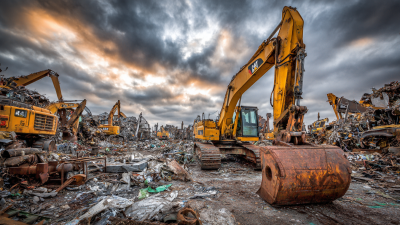
Innovative Examples of Best Machinery Recycling Practices in the Industry
-
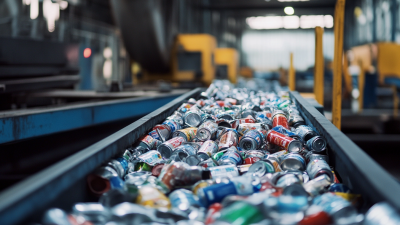
Elevating Global Standards: How Our Aluminum Can Compactor Redefines Quality in Manufacturing
-
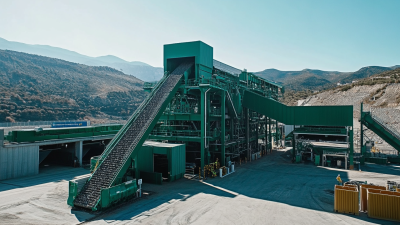
The Evolution of Recycling Machinery in a Sustainable World
-
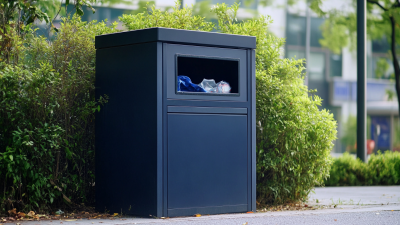
Exploring the Features and Uses of Best Automatic Trash Compactors: A Comprehensive How-To Guide
-

The Ultimate Guide to Choosing the Right In Home Trash Compactor for Your Needs
-

How Chinese Manufacturing Thrives Despite US-China Tariff Challenges: The Rise of the Best Home Compactor
